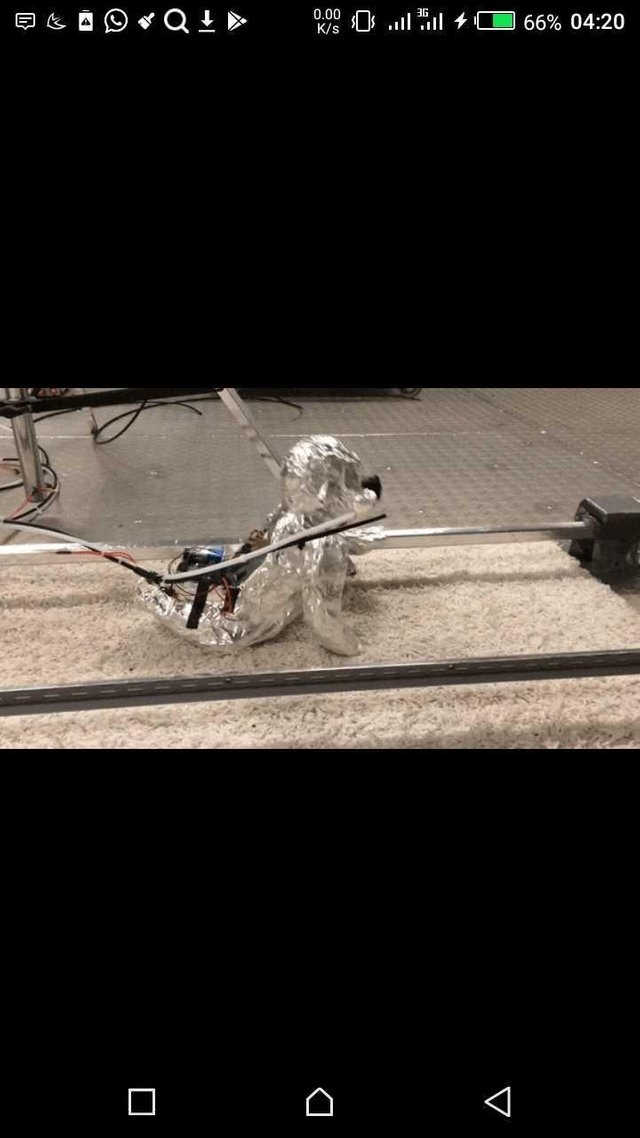A wrapped crawling robotic half baby Scientists made
A foil-wrapped robotic half-baby that looks like it escaped from an unnerving avant-garde art installation is helping researchers to understand how much dirt, pollen, skin cells and bacteria are stirred up — and inhaled — by crawling infants.
When newly mobile babies crawl around their homes or other locations, their mouths and noses are close to the floor. Indoor environments, particularly carpeted areas, can trap a diverse collection of debris, including pollen, skin cells, dirt, fungal spores and bacteria. The new study is the first to analyze indoor debris dispersal and inhalation from a crawling baby's perspective.
To visualize how much of that debris infants might be stirring up with their vigorous movements, scientists built a robotic baby. They took a crawling baby doll and transformed it into a silvery, legless contraption that drags itself forward by paddling its arms, and whose trunk terminated in an array of wires and cables. As the robot scooted over sections of debris-rich carpets — which were taken from actual homes — the study authors collected and analyzed the particle clouds that rose up around it
